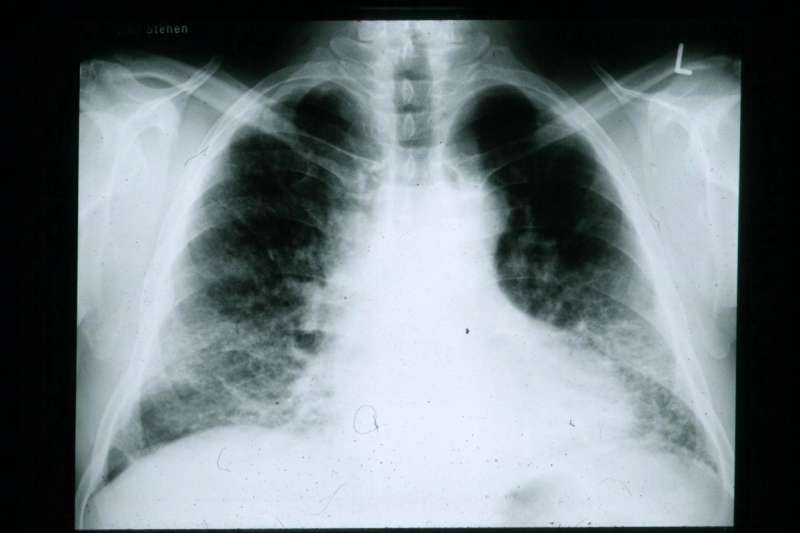A new target for the treatment of idiopathic pulmonary fibrosis

An article published in Experimental Biology and Medicine identifies a new target for the treatment of idiopathic pulmonary fibrosis. The study, led by Dr. Huaping Dai in the Department of Pulmonary and Critical Care Medicine and the Center of Respiratory Medicine at China-Japan Friendship Hospital and the National Clinical Research Center for Respiratory Disease in Beijing, China, reports that interleukin-25, an inflammatory cytokine, is elevated in patients with idiopathic pulmonary fibrosis and contributes to lung fibrosis in an animal model.
More than 50,000 people in the U.S. die from idiopathic pulmonary fibrosis (IPF) each year.
IPF is a type of lung disease that results in fibrosis, or scarring, of the lungs. As the disease progresses and the scarring worsens, patients are unable to take a deep breath and the lungs are can no longer provide sufficient oxygen for the body. There is no cure for IPF and there are no treatments that remove the scarring from the lungs. Studies have shown that inflammatory cytokines, such as interleukin-25 (IL-25), potentiate the pathogenesis of allergen-induced airway diseases by promoting inflammation and remodeling of the airway. However, the role of IL-25 in inflammation and fibrosis in IPF is not known. The identification of pathways that drive IPF progression will provide new targets for drug discovery and may lead to effective treatments for this and other lung diseases.
In the current study, Dr. Dai and colleagues examined the potential role and mechanisms of IL-25 in IPF. IL-25 levels (protein and mRNA) were significantly higher in IPF patients when compared to normal controls. Intranasal administration of IL-25 to mice induced the expression of other inflammatory cytokines, extracellular matrix proteins and growth factors in lung epithelial cells. IL-25 administration also induced the proliferation of lung fibroblasts and the expression of several genes that promote fibrosis. Collectively, these studies demonstrate that IL-25 contributes to lung fibrosis by direct activation of lung fibroblasts and epithelial cells. Dr. Dai said that "treatment targeting IL-25 may be a novel method for treating IPF patients."
Dr. Steven R. Goodman, editor-in-chief of Experimental Biology and Medicine, said, "Dai and colleagues have demonstrated that IL-25 and its receptor are upregulated in lung tissue from patients with idiopathic pulmonary fibrosis (IPF). Further, they demonstrated that IL-25 can recapitulate IPF-like lung fibrosis in mice via activation of alveolar epithelial cells and lung fibroblasts. Future studies will help to determine the link between IL-25 and the clinical features of IPF."
More information: Xuefeng Xu et al. Feature Article: IL-25 contributes to lung fibrosis by directly acting on alveolar epithelial cells and fibroblasts, Experimental Biology and Medicine (2019). DOI: 10.1177/1535370219843827















